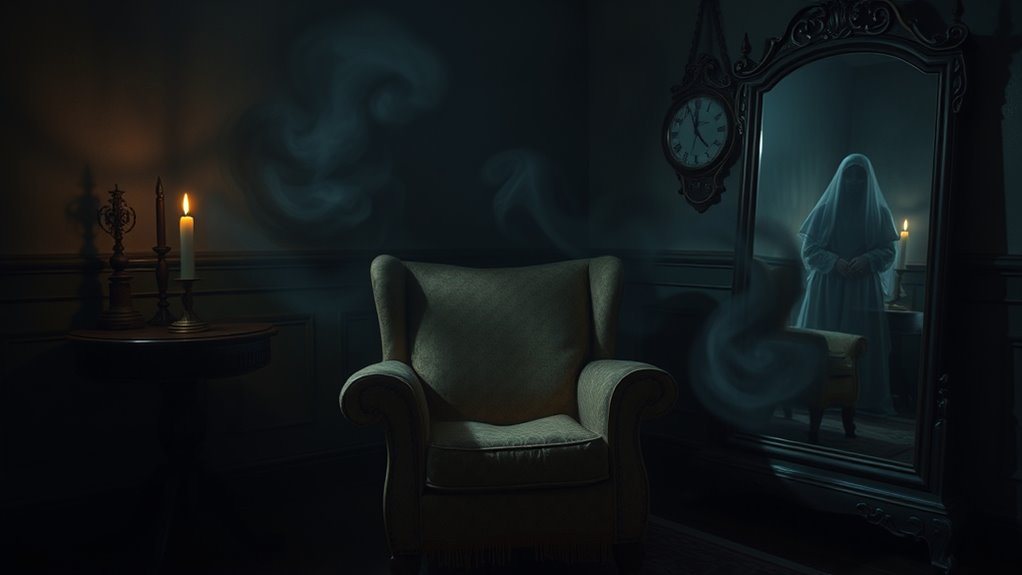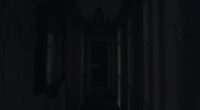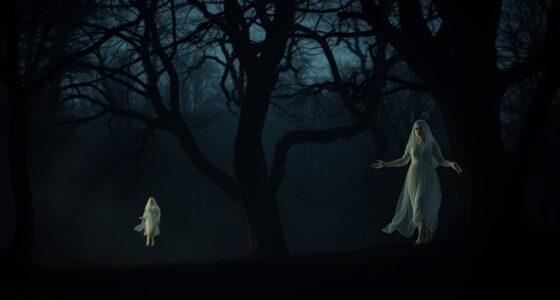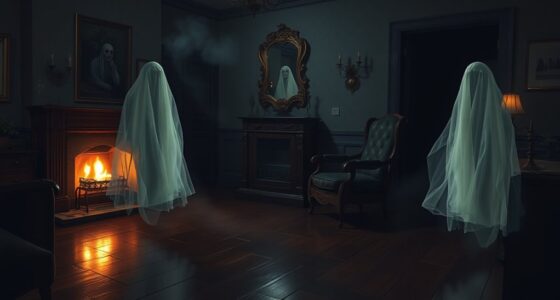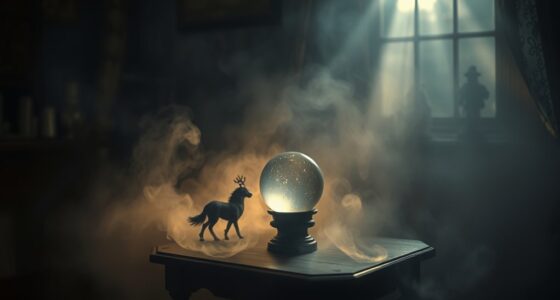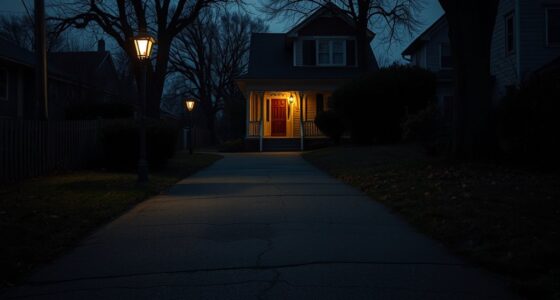Paranormal activity refers to experiences and events that go beyond normal scientific explanation. This includes things like ghost sightings, poltergeist activity, and prophetic dreams. People often report encounters that feel real but lack empirical evidence. Many cultural influences shape these beliefs, ranging from ancient folklore to modern media. Understanding what’s behind these experiences can be complex, but there’s much more to explore.
Key Takeaways
- Paranormal activity refers to events that defy conventional scientific explanation, often involving supernatural phenomena.
- Common types include ghost sightings, poltergeist activity, and experiences with cryptids or aliens.
- Historical beliefs in the supernatural have persisted for thousands of years, influenced by culture and folklore.
- Psychological factors and emotional states often shape perceptions of paranormal experiences, leading to misinterpretations.
- Many claims lack scientific validation, requiring critical analysis and objective evaluation to discern fact from fiction.
Definition and Overview of Paranormal Activity
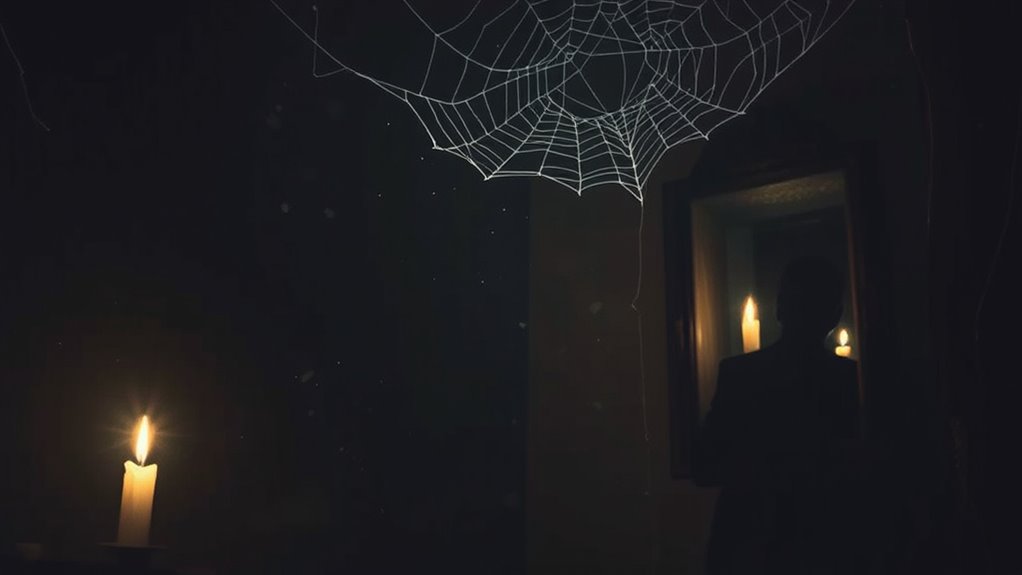
Paranormal activity refers to events that defy conventional scientific explanation, capturing our curiosity and imagination.
The term “paranormal” has been around since at least 1920, blending “para” (beyond) with “normal” to describe experiences that lie outside typical scientific understanding. Prophetic dreams, for instance, are a type of paranormal phenomenon that some individuals believe can predict future events. The fascination with these experiences often stems from a deep-seated human desire to explore the mysteries of the supernatural realm. Many cultures have created cryptid myths that further fuel interest in the unknown. This blend of folklore and reality often encourages a search for wisdom-infused quotes on life, as individuals seek deeper meanings behind their experiences.
Often rooted in folklore and popular culture, these phenomena are frequently classified as pseudoscience due to their lack of empirical evidence. Many people, despite skepticism, believe in or report experiencing these events.
From a scientific perspective, misperceptions or natural anomalies often explain reported occurrences. Human perception fallibility contributes significantly to the prevalence of paranormal experiences, as it can lead individuals to misinterpret ordinary events as supernatural. Additionally, understanding emotional dysregulation can shed light on how intense feelings might influence perceptions of paranormal activity.
Cultural and psychological factors can shape how you interpret these experiences, highlighting the complex interplay between perception and reality in the domain of the paranormal.
Common Types of Paranormal Phenomena
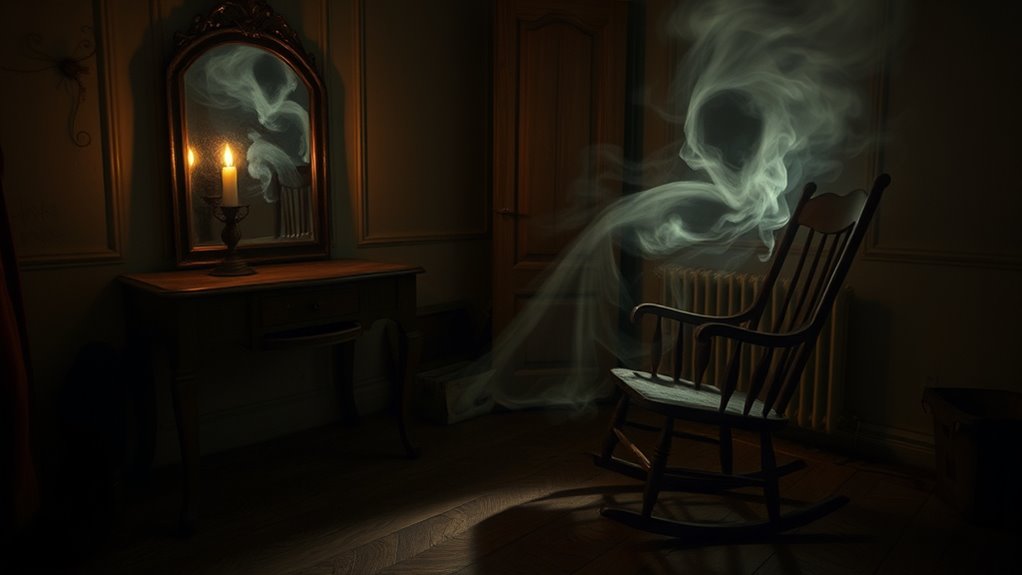
What kinds of phenomena fall under the umbrella of the paranormal? You’ll find a variety of ghostly encounters, like ghost sightings, where apparitions appear, or residual hauntings that replay past events. Recognizing angel numbers can enhance awareness of love opportunities. Engaging in dynamic communication exercises can also deepen connections and understanding of these experiences. Intelligent hauntings involve spirits interacting with you, while poltergeist activity manifests as objects moving or strange noises. Then there are shadow people, eerie figures that lurk in the background. Paranormal subjects are often considered a subset of pseudoscience, which further complicates the understanding of these occurrences. Many enthusiasts believe that these experiences can reveal hidden mysteries about our existence. The exploration of these phenomena often encourages critical thinking about the nature of reality and our perception of it. Additionally, some also find significance in soulmate angel numbers, which can signal readiness for love and deeper connections.
Beyond ghosts, cryptid phenomena like Bigfoot and UFO sightings captivate many. You might even come across claims of alien abductions or time slips, where time and space seem to shift unexpectedly. These experiences often blur the lines between reality and the unknown, igniting both fear and fascination in those who encounter them.
Historical Context and Evolution of Paranormal Beliefs
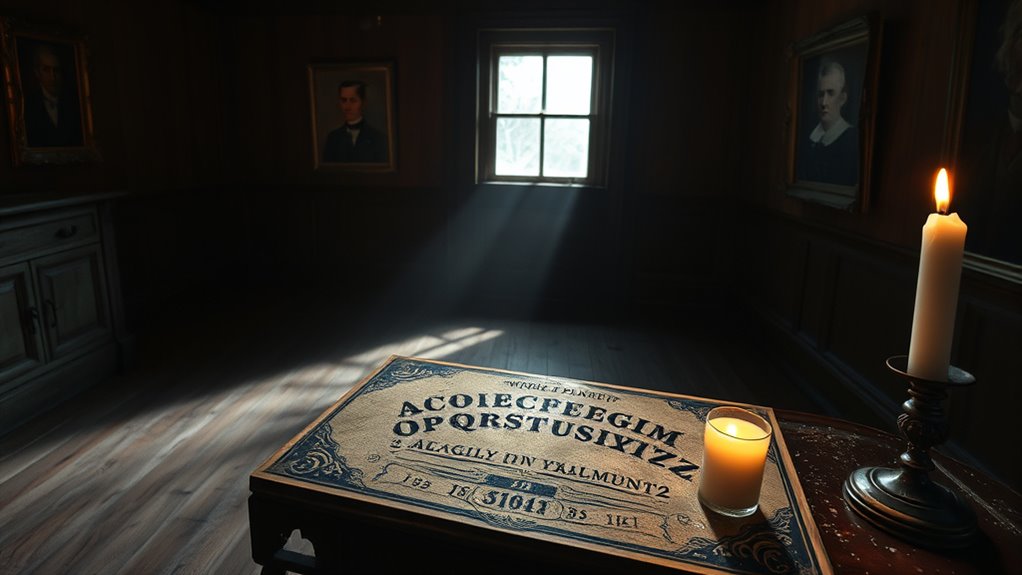
Throughout history, beliefs in the supernatural have evolved alongside human societies, influencing cultures in profound ways. Ancient Mesopotamian cuneiform records show that supernatural beliefs, woven into daily life and spiritual practices, date back around 4,000 years. Cuneiform writing served not only for business transactions but also to document ghost sightings and spiritual events, illustrating the deep integration of the paranormal in early civilizations. Moreover, the concept of astrological compatibility may have played a role in how ancient peoples interpreted spiritual experiences and relationships. Butter, with its cultural significance, has also played a role in rituals that evoke spiritual connections, showcasing humanity’s search for meaning in the unseen. Additionally, studies indicate that trust issues often arise from experiences related to infidelity, paralleling the emotional responses evoked by paranormal encounters. The prevalence of iconic monsters in early folklore also contributed to the understanding of supernatural events as manifestations of societal fears. Furthermore, the cybersecurity vulnerabilities highlighted during major outages demonstrate how societal fears can shift, impacting beliefs and trust in the unseen.
In medieval times, ghost sightings became common in folklore, often serving as cautionary tales shaped by Christian theology. The Victorian era sparked renewed interest in spiritualism, with séances and Gothic literature exploring the unknown.
Today, a significant portion of the population still believes in paranormal phenomena, driven by personal experiences and cultural factors. Despite scientific skepticism labeling these beliefs as pseudoscience, they persist, reflecting humanity’s ongoing fascination with the mysterious and unexplained aspects of existence.
Cultural Influence of Paranormal Activity
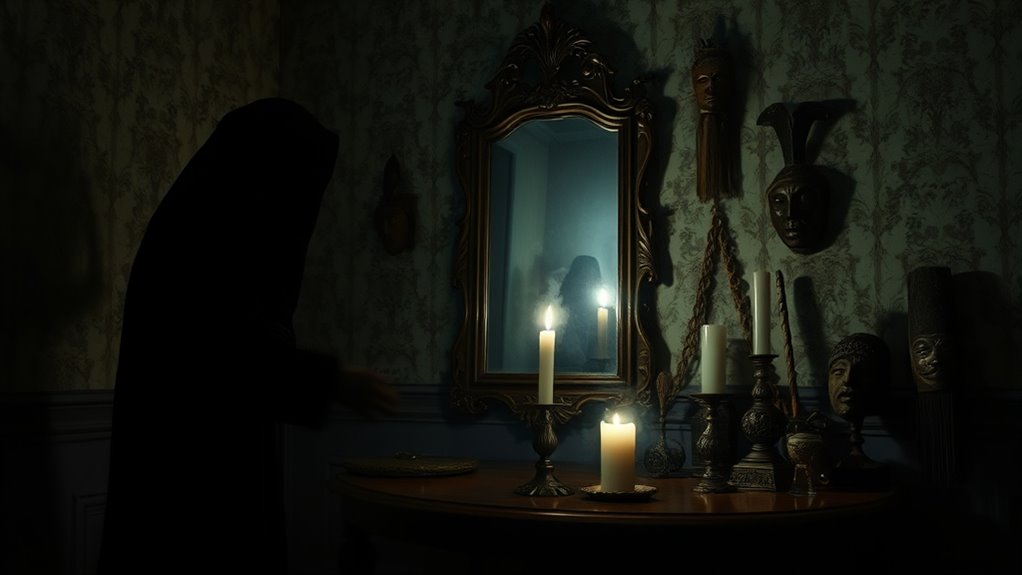
As interest in the supernatural grows, cultural expressions of paranormal activity have become increasingly prominent in various media. You’ll find paranormal themes in films, TV shows, and online content, blending horror and suspense to captivate audiences. The concept of unbeatable savings through smart shopping has also found its way into merchandise related to these themes, as fans seek to collect memorabilia from their favorite paranormal franchises. Additionally, the exploration of curiosity-driven individuals often leads to a greater appreciation for the unknown, fueling interest in paranormal phenomena. Moreover, the emotional instability associated with BPD traits can enhance the allure of these supernatural narratives, as they often explore deep psychological themes. Understanding astrological compatibility can further unveil how personal beliefs influence one’s fascination with the supernatural.
The younger generation plays a vital role in this fascination, drawn in by shows like “Ghost Hunters” and films such as “The Sixth Sense.” Different cultures also shape beliefs; for example, Asian festivals celebrate spirits, while African traditions emphasize ancestral guidance. Indigenous communities often incorporate traditional healing practices into their understanding of spiritual experiences, further enriching the cultural tapestry of paranormal beliefs.
Subcultures like goths and nerds further explore these themes, influencing broader perceptions. With the rise of digital platforms, sharing paranormal stories has never been easier, allowing diverse narratives to flourish and evolve, reflecting societal fears and hopes.
Scientific Evaluation and Skepticism of Paranormal Claims
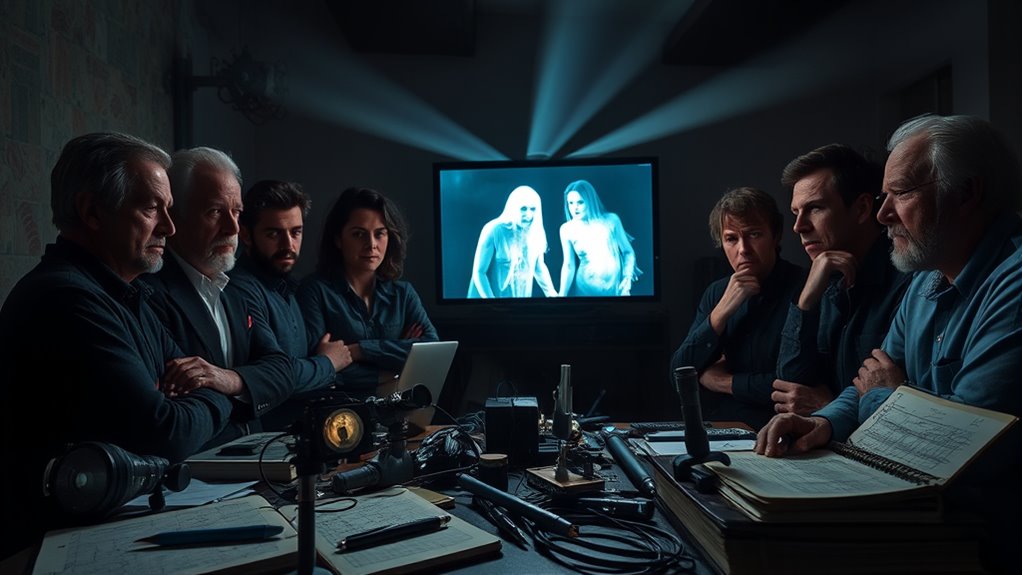
Interest in paranormal themes often leads to claims that challenge scientific understanding. While about 15% of people report ghost encounters, most paranormal claims lack scientific validation.
Investigators use systematic approaches to differentiate these claims from natural phenomena, employing tools like EMF detectors and cameras. They endeavor to eliminate bias, adhering to principles like Occam’s Razor, which favors simpler explanations. Evidence-based investigations often strengthen claims when they are supported by rigorous documentation and analysis. Additionally, understanding the narcissist-borderline dynamic can help clarify how psychological factors may influence perceptions of paranormal experiences. Recognizing patterns of gaslighting tactics can also shed light on how individuals may misinterpret their experiences as paranormal. Furthermore, the need for robust safety measures in AI technology reflects the challenges faced when validating complex phenomena, including those in the paranormal realm. Additionally, many reported incidents can be traced back to high-sugar or high-fat foods that lead to altered states of perception and misinterpretations of reality.
Often, reported events are misinterpretations or even hoaxes. Psychological factors can create sensations mistaken for paranormal activity.
Skeptical perspectives critically analyze these claims, demanding objective data and replication to validate findings. Ultimately, a lack of scientific consensus and challenges in replicating results raise questions about the credibility of paranormal research, presenting a stark contrast to popular belief.
Frequently Asked Questions
Can Paranormal Activity Be Proven Scientifically?
You might find proving paranormal activity scientifically quite challenging.
Most phenomena lack verifiable evidence, making it difficult to validate claims. When you consider that many experiences stem from suggestion or misinterpretation, the task becomes even tougher.
Technologies like electromagnetic field detectors and temperature sensors can help, but they often yield inconclusive results.
Ultimately, without replicable evidence, the scientific community remains skeptical, favoring simpler, natural explanations over supernatural theories.
What Are Some Famous Paranormal Investigations?
They say curiosity killed the cat, but in the domain of paranormal investigations, it often leads to fascinating stories.
You might’ve heard about the Amityville Horror, where a tragic past sparked eerie events. The Warrens’ involvement in the Perron Family Haunting inspired chilling films too.
And don’t forget the Enfield Poltergeist, which baffled many. Each case captivates audiences, blending fear with intrigue, keeping the spirit of exploration alive.
How Do Cultural Beliefs Influence Paranormal Experiences?
Cultural beliefs shape your understanding of paranormal experiences in profound ways. Depending on your background, you might interpret a ghost sighting as a spirit seeking peace or an ancestral visit.
These beliefs influence how you react—whether with fear, reverence, or curiosity. Rituals and practices emerge from these interpretations, helping you connect with the supernatural while reinforcing community bonds.
Ultimately, your cultural lens guides your perceptions and expectations surrounding the paranormal.
Are There Any Well-Documented Paranormal Cases?
Imagine wandering through a shadowy forest, where whispers of the past beckon you closer.
You’ll find well-documented paranormal cases, like the Enfield Poltergeist, where furniture moved on its own, leaving witnesses in disbelief.
Or consider the haunting of the Amityville Horror, which captured the world’s attention.
Each account unravels a tapestry of eerie events that challenge our understanding, inviting you to explore the thin veil between reality and the unknown.
How Can I Protect Myself From Paranormal Experiences?
To protect yourself from paranormal experiences, stay informed about psychological and environmental factors that can lead to misinterpretation.
Avoid isolation; being around others can help you maintain a rational perspective.
Prepare emotionally by managing fear and anxiety through understanding.
Challenge your assumptions by resisting confirmation bias, and always consider natural explanations first.
Finally, approach claims skeptically and use critical thinking to evaluate any situations you encounter.
Conclusion
In exploring paranormal activity, you’ll find a blend of fascination and skepticism. While some embrace the thrill of the unknown, others remain grounded in scientific inquiry. This dance between belief and doubt shapes our understanding of the supernatural. You might feel a shiver at ghost stories, yet question their validity. Ultimately, whether you’re a believer or a skeptic, the allure of the paranormal sparks curiosity, inviting you to investigate deeper into the mysteries that surround us.
